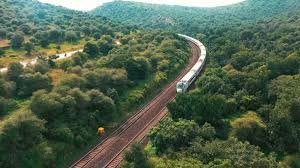Achanakmar Tiger reserve
Why in the News?
- Achanakmar Tiger Reserve’s tiger population increased from five in 2022 to 18 in 2025, aided by the arrival of tigress Jhumri from Bandhavgarh in 2018.
- Enhanced conservation measures including patrolling, GIS-based monitoring, artificial waterholes, and creation of super grasslands helped protect tigers and reduce human-animal conflict.
- As a key wildlife corridor between Kanha and Bandhavgarh, ATR’s revival highlights the success of integrated conservation combining technology, habitat management, and community participation.
About Achanakmar Tiger Reserve

- Location and Establishment
- Located in Bilaspur, Chhattisgarh.
- Initially declared a wildlife sanctuary in 1975, it was upgraded to a tiger reserve in 2009.
- It forms part of the Achanakmar-Amarkantak Biosphere Reserve.
- Ecological Significance
- Acts as a vital wildlife corridor connecting Kanha and Bandhavgarh Tiger Reserves, facilitating tiger movement and maintaining genetic diversity.
- Tribal Communities
- Home to indigenous communities such as Baigas (PVTG), Gonds, and Yadavs.
- River and Water Resources
- The Maniyari River flows through the reserve and is considered its lifeline.
- It eventually merges with the Seonath River in the Mahanadi Basin.
- Vegetation and Flora
- Dominated by tropical moist deciduous forests.
- Key tree species include Sal, Saja, Tinsa, Bija, Haldu, Teak, Dhawara, Lendia, Khamar, and Bamboo.
- Fauna
- Major wildlife species include tiger, leopard, wild dog, hyena, bison, chinkara, sambar, chital, and flying squirrel.
Also Read | |
| UPSC Foundation Course | UPSC Daily Current Affairs |
| UPSC Monthly Magazine | CSAT Foundation Course |
| Free MCQs for UPSC Prelims | UPSC Test Series |
| ENSURE IAS NOTES | Our Booklist |





